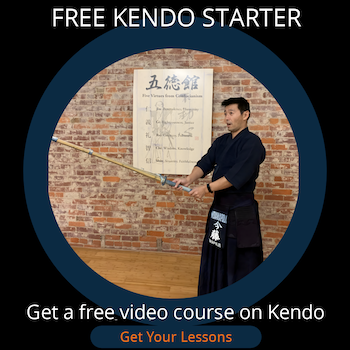Need Kendo Instructions?
You Got It!
You Got It!
Two Handed Tsuki and One Handed Tsuki
by Reyhan
(Indonesia)
One month ago, I started to practice tsuki. But, I practice the two handed tsuki. Is it allowed to do two handed tsuki in shiai? Which one is better, two handed tsuki or one handed tsuki?
Answer: First of all, tsuki is not allowed until you become certain level. Each kendo federation has its own rule on when they are allowed to use tsuki. For example, in Japan, you are not allowed to do tsuki until you become a high school student (15 years old in Japan).
Please check with the federation you belong to whether or not you are eligible to use tsuki in shiai.
Tsuki is extremely dangerous. That is why junior high school students or below do not even practice tsuki.
If people are 18 years old or older and having been doing kendo around 6 and 7 years old, I think they can start practicing tsuki. Why? It is because those who execute tsuki must be able to control their shinai very well.
For example, if we think our tsuki will hurt our opponents badly while executing a tsuki, we should be able to pull out our shinai quickly before we seriously hurt our opponents.
We should not execute tsuki on those who do not know how to take tsuki properly. People want to learn tsuki but they do not know how painful and dangerous it can get. Please do make sure that you do not tsuki on those who are inexperienced in tsuki.
This is what I say to my students.
“If you do not know the pain of tsuki, don’t do it to others.”
Two-handed tsuki is called morote-zuki (or morote-tsuki) and one-handed tsuki is called katate-tsuki.
Katate-tsuki is can be executed from issoku itto no ma or further, while morote-zuki is executed from a bit closer distance than that. As you can imagine, morote-zuki is more powerful than katate-tsuki.
Morote-zuki is often used to break through our opponent’s chudan so we can attach our opponent more powerfully.
Also when it succeeds, we can put ourselves in a better situation than our opponents because they are now afraid of our tsuki, i.e. strong seme.

